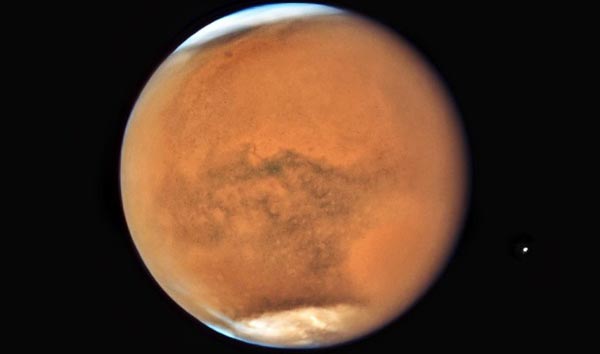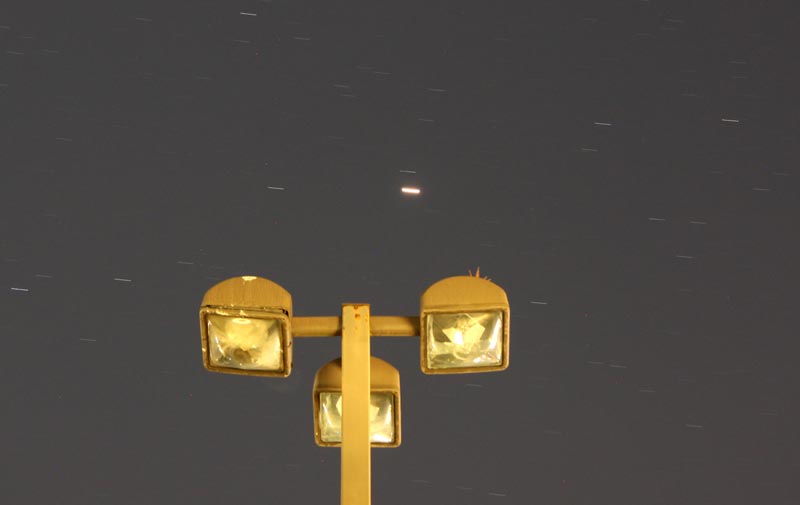Mars, Meteors and Moon in Blue for Washington, Oregon Coastlines
Published 10/07/20 at 3:54 AM PDT
By Oregon Coast Beach Connection staff

Includes exclusive listings; some specials in winter
In Cannon Beach:
Includes rentals not listed anywhere else
In Manzanita, Wheeler, Rockaway Beach:
Some specials for winter
In Pacific City, Oceanside:
Some specials for winter
In Lincoln City:
Some specials for winter
In Depoe Bay, Gleneden Beach:
Some specials for winter
In Newport:
Look for some specials
In Waldport
Some specials for winter
In Yachats, Florence
Some specials for winter
(Portland, Oregon) – The sky is not even the limit along the Oregon and Washington coast this month. Beyond the beaches, we’re talking intense views of Mars, meteors and the moon in blue. (Photo above courtesy NASA)
October 6 already had plenty to gawk at along the coastlines of Washington and Oregon, as well as the inland Pacific Northwest. Mars just completed its closest run to Earth in the morning and the International Space Station made its second appearance in two days.
But wait, there’s more. This isn’t the last you’ve heard of Mars. According to astronomy expert Jim Todd with Portland’s OMSI, Mars will continue to be brighter than nearby Jupiter for awhile. Then later, more happens with the red planet.
“Mars will officially reach opposition on October 13,” he told Oregon Coast Beach Connection. “The bright red planet will rise from the east at sunset (6:27 p.m.), climb to its highest position, 49° above the southern horizon (1 a.m.), and set in the west at sunrise (7:26 a.m.). At opposition, Mars will shine at visual magnitude of -2.62. Although it will be farther from Earth at distance of 38.57 million miles than it was on October 6, Mars will still be an impressive sight.”

Mars and other stars moving in Portland Wednesday morning
Todd said planetary opposition is the middle point of the best time of year to see an outer planet.
“It’s when Earth is passing between an outer planet and the sun, placing the planet opposite the sun in our sky,” Todd said. “A planet at opposition is closest to Earth, and it rises when the sun sets and can be viewed throughout the night.”
After this point, Mars will start to decrease in brightness but it will remain bright throughout the rest of the year, especially in winter when skies may be especially crystalline and allow even better viewing.
For those with high-powered telescopes, the second half of October brings a new side to Mars. It will show off its volcanic and desert areas about midnight, including the Elysium Mons and the gargantuan Olympus Mons.
Suggestion from Oregon Coast Beach Connection: check out both seasons of the series Mars, found on Netflix. It will cause you to look at the red dot in the sky with new appreciation.
Right now, Earth is already getting views of the Orionid meteor shower, which started last week and goes through November 7. Its peak will be October 21, where you may see as many as 20 an hour. Scientists say look in the last hours before dawn, which will yield the biggest number of streaks. The crescent moon will be setting by mid evening, providing largely darker skies.
The Orionids are the result of the Earth passing through the stream of debris left by Comet Halley.
Where to see them on the Oregon or Washington coast? Higher vantage points help a little, such as Cape Arago near Coos Bay, the gravel pullout just north of Cape Perpetua, Anderson’s Viewpoint near Oceanside, or Cape Foulweather or the Neahkahnie Lookouts near Manzanita. These sights are, of course, weather dependent.
Also on the galactic menu for October are two full moons, the last of which is called a blue moon. See Oregon Coast Weather - Washington Coast Weather
Oregon Coast Hotels for this event - Where to eat - Map - Virtual Tour
Cannon Beach Lodging
Nehalem Bay Lodgings
Manzanita Hotels, Lodging
Three Capes Lodging
Pacific City Hotels, Lodging
Lincoln City Lodging
Depoe Bay Lodging
Newport Lodging
Waldport Lodging
Yachats Lodging
Oregon Coast Vacation Rentals
Oregon Coast Lodging Specials
Below: meteor at Manzanita and in the Oregon Coast Range


More About Oregon Coast hotels, lodging.....
More About Oregon Coast Restaurants, Dining.....
LATEST Related Oregon Coast Articles
A curious weather phenomenon that happens more out here
Curb, Road Construction Resumes in Lincoln City as Oregon Coast Season Begins...
Crews return Sept 15 with some dust and small delays. Traffi
NASA Announces First Evidence of Life on Mars in Possible Biosignature
In a former riverbed billions of years old, they found spots with interesting compounds. Astronomy
Portland, Oregon - Beaverton, Oregon Weather and Alerts | Current Conditions,...
Current weather conditions and alerts for Portland and Beaverton
Oregon Coast Scenic Railroad's Fame Engine Turns 100 Years Old with Special Runs
Sept 20 and 21 various special rides. Garibaldi events, Rockaway Beach events, Wheeler events
South Oregon Coast Goes Interstellar: Coos Bay's Sunset Bay Astronomy Fest Se...
Shore Acres State Park gets spacey. Coos Bay events
Swarm of 12 Quakes Fire Off 100 Miles from South Oregon Coast
After the initial 5.8, ranging in magnitude from 2.7 to 5.1: Coos Bay, Port Orford, Bandon, Gold Beach. Geology, weather
SOLVE Cleanup Happens Along Oregon Coast, Inland Sept 20 Through 28
SOLVE is inviting volunteers to take part. Brookings events, Gold Beach events, Port Orford events, Coos Bay events, Bandon events, Florence events, Yachats events, Newport events, Lincoln City events, Rockaway Beach events, Manzanita events, Cannon Beach events, Seaside events, Astoria events
Back to Oregon Coast
Contact Advertise on BeachConnection.net
All Content, unless otherwise attributed, copyright BeachConnection.net Unauthorized use or publication is not permitted














































